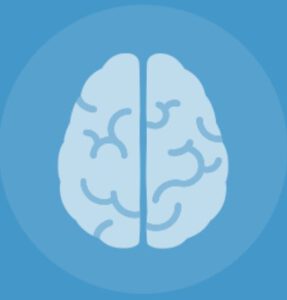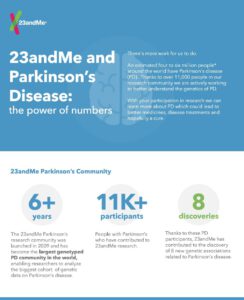After four days in Berlin attending the massive annual meeting of the back hopeful for the future.
back hopeful for the future.
The challenge for Paul is distilling the most important takeaways from a meeting that included more than 5,500 participants, 2,111 scientific abstracts and hundreds of presentations.
This year the meeting included news of promising clinical trials, innovative technology for monitoring symptoms, and new findings in the hunt for the genetics behind the disease.
“Since this was a meeting primarily intended for specialists and others caring for individuals with Parkinson’s and other movement disorders there was a lot of focus on new therapies including non-drug related ones,” said Paul.
There was also a lot of new data on the importance of nonmotor function symptoms associated with Parkinson’s, including a sobering study that showed that half of all Parkinson’s patients suffer anxiety which in turn can lead to debilitating depression.
For both those treating and studying the disease understanding these nonmotor symptoms is  important not just to maintain a patient’s health but also for understanding whether these seemingly unrelated symptoms might shed new light on the progression of the disease or even offer new ways of making an earlier diagnosis.
important not just to maintain a patient’s health but also for understanding whether these seemingly unrelated symptoms might shed new light on the progression of the disease or even offer new ways of making an earlier diagnosis.
But patients themselves often do not draw attention to these symptoms – which might include such things as insomnia, difficulty with regular bowel movements and sexual dysfunction – because they believe they are unimportant for treating Parkinson’s.
Paul was particularly interested in the work presented around sleep disorders for individuals with Parkinson’s, particularly related to something called REM sleep behavioral disorder or RBD. It’s a common symptom among Parkinson’s patients that includes vigorous movement during REM sleep. This can sometimes be dangerous for both the patient and their partner. It’s also an early sign of the disease and, similar to Parkinson’s is believed to be related to misfolding and clumping of alpha-synuclein in the brain.
“It’s of interest in terms of Parkinson’s research because it appears to be a precursor to a number of alpha-synucleinopathies,” Paul said.
RBD occurs in about half of individuals with Parkinson’s often, but not always preceding PD diagnosis. Looking at many of these non-motor symptoms collectively may help researchers identify people who are at risk for developing Parkinson’s, Paul said. The challenge, at least with RBD, is that formal diagnosis, currently requires overnight observation in a sleep clinic, an option that is impractical for many Parkinson’s patients.
Another highlight of the meeting in Berlin was new research around mutations in the GBA gene, carrying two copies of which is associated with developing Gaucher’s disease, an inherited disorder that causes fatty substances to accumulate in cells.
This rare condition was first linked to Parkinson’s in 2008. The same mutations that put someone at risk for Gaucher’s are also associated with a higher risk for developing Parkinson’s. Unlike Gaucher’s, carrying one mutant version of the gene is sufficient to increase the risk of PD. Researchers are looking at parallels in the biology of the diseases. In Gaucher’s disease the genetic mutations lower the level and activity of an enzyme that helps break down proteins and lipids. Lower levels of this same enzyme may allow for the accumulation of alpha-synuclein in the brain.
There’s much more, but for Paul what was most compelling was news that there is research from a number of groups that has identified compounds that target that key enzyme and may in turn be useful for treating both Gaucher’s and Parkinson’s.
“There is also reason to believe that this mechanism might work on regular Parkinson’s not just those cases that are due to GBA mutations,” said Paul.
But as yet none of the compounds are in the clinical testing phase.
That said, the meeting in Berlin did include information on several different promising treatments that are in either the clinical trials phase or beyond. Some of those involved several new treatments for patients who have tremors, including the use of focused ultrasound. There is also progress in testing of the drug isradipine, a drug used for treating high blood pressure, use of which has been shown to be associated with a lower incidence of Parkinson’s. The drug is now in a phase three clinical trial, according to Paul.
Finally, he noted that the Berlin meeting also featured several studies showing the steady progress around exploration of Deep Brain Stimulation as a way to treat many of the motor symptoms of Parkinson’s.
“In one clinical study DBS appeared to have better outcomes than ‘best medical treatment’,” Paul said.